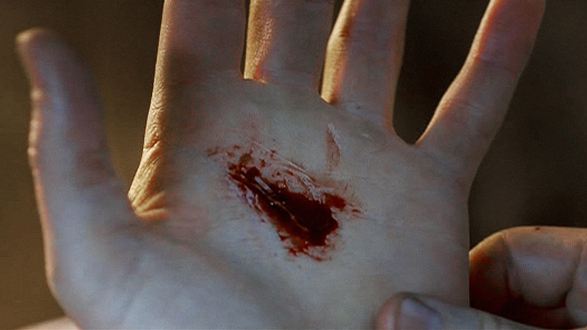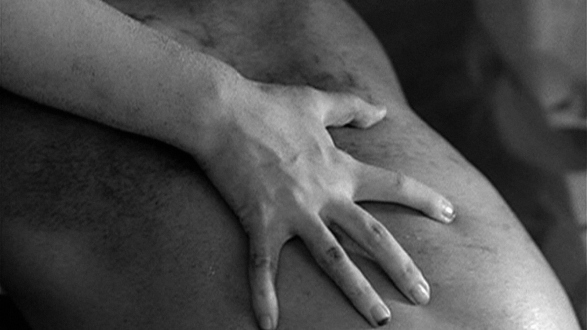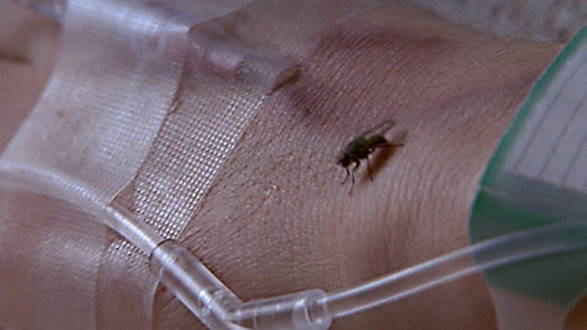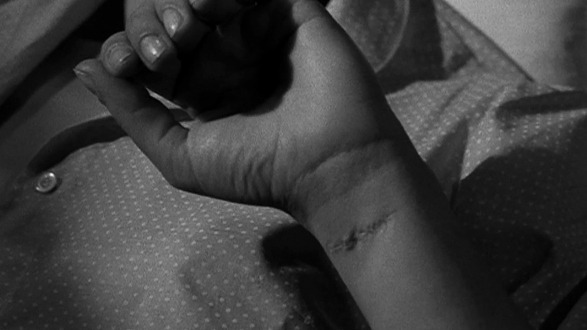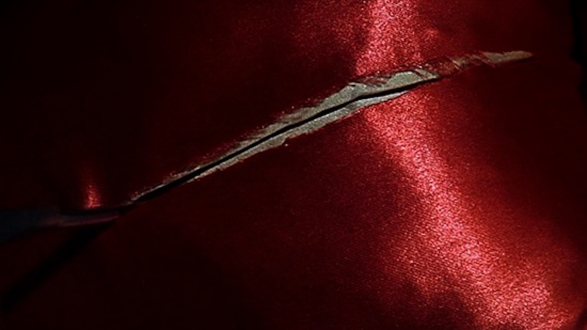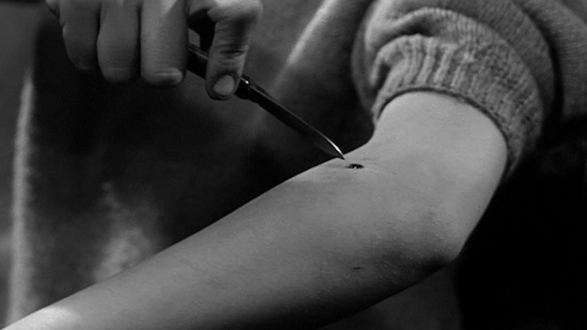Cut – Christoph Giradey & Mathias Müller (Works)
Selected Works
Christoph Giradey & Mathias Müller
Cut – Christoph Giradey & Mathias Müller Press Release
Thomas Erben Gallery is pleased to present Cut, an exhibition of video work by Christoph Girardet and Matthias Müller, who since 1999 have collaborated on over a dozen film projects. For these pieces, Girardet and Müller apply their backgrounds in film history to a research-based process, sourcing clips from a wide variety of films. Through the artists’ technically masterful editing, these sequences are woven together and transformed into precise, layered collages in which a range of potential meanings arises.
For the projected video Cut, Girardet and Müller combine material from 95 movies that span temporally from 1947 to 2012. The shots depict most frequently incisions, scars, sutures, and blood – bursts of red in an otherwise reduced, predominantly neutral palate. The camera lingers on these sites of bodily damage, but through the artists’ sequencing this repulsive imagery becomes beautiful and fascinating. Water dripping in a sink becomes an intravenous drip, which becomes blood running through medical tubing. These formal gestures reoccur throughout the piece, with bodies and objects becoming substitutes for one another, linked by the action they sustain. Throughout, there is an obsessive interest in the physicality of the body, and the effect that awareness of its fragility has on us as viewers. The artists focus on the abjection of the body: the barrier between inside and outside becomes perverted through organic material like blood, hair clippings, and peeled skin – or through penetration, both surgical and sexual.
Wounds may break the body, but they also are a reminder of health, as indicated in time lapses of bruises and burns healing. The action of a cut is then ambivalent, acting both to sever, but also to create a site for future reunion. This dual meaning is mirrored in the work’s engagement with film history. Film operates by bringing discrete parts together, both at the level of single stills played back rapidly to produce the illusion of movement – motion pictures – as well as through the editing process. A “cut” is the means by which clips are joined together, and the video is produced entirely through cuts between clips and cuts to black. Girardet and Müller’s Cut performs an act of both violence and creativity: it repels its viewers with its mangled forms, while at the same time engendering a process of identification between the viewer’s body and the filmic body.
Displayed as a counterpoint in the gallery, Reflex plays on a small monitor in a continuous loop. In this black and white video, two hands lay palm up as another individual taps the outstretched fingers with a pen. The clinical action resembles a reflex test, as with each tap the finger flexes seemingly automatically. At the same time, superimposed text and a voice each produce a word – sometimes identical, sometimes antonyms. It becomes evident that each finger corresponds to a word, correctly labeled by the overlaid text. When arranged in order, the words produce the statement “one is unaware of the process as it is happening.” Derived from theories on language acquisition, the completed sentence suggests that speech is learned through an unconscious process. Language emerges automatically, and is acquired without any realization. And yet, the mismatches reappear in the looped video, and the voice does not learn.
While Reflex’s patient fails to change, both Cut and Reflex function by transformation. Cut presents its audience with tragedy and horror, and thus makes its viewers aware of their vulnerability. However, it appears as an integrated element of life’s experience, and our identification becomes a reverent and affirming symbol of life. Through the works’ shifting associations – images of the body resonate within shots of insects, plants, and landscapes – they function as poetry, bringing together disparate moments into a new cinematic body.
Phoenix Tapes, the first found footage video piece by Christoph Girardet and Matthias Müller, premiered at the Venice International Film Festival in 1999. Since then, the artists’ works have been honored with major awards and have been exhibited at art institutions worldwide, such as the Walker Art Center, Minneapolis; Bozar – Palais des Beaux-Arts, Brussels; Tate Modern, London; Deichtorhallen, Hamburg; and EYE Institute, Amsterdam. Their joint projects are held in public collections such as Marta, Herford; Goetz Collection, Munich; Colección Sánchez Ubiría, Madrid; and Kunsthalle Bielefeld, among others. Girardet (b. 1966) lives and works in Hannover and Müller (b. 1961) lives and works in Bielefeld and Cologne.
